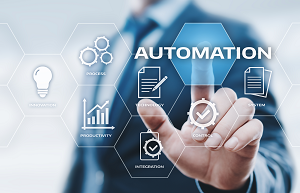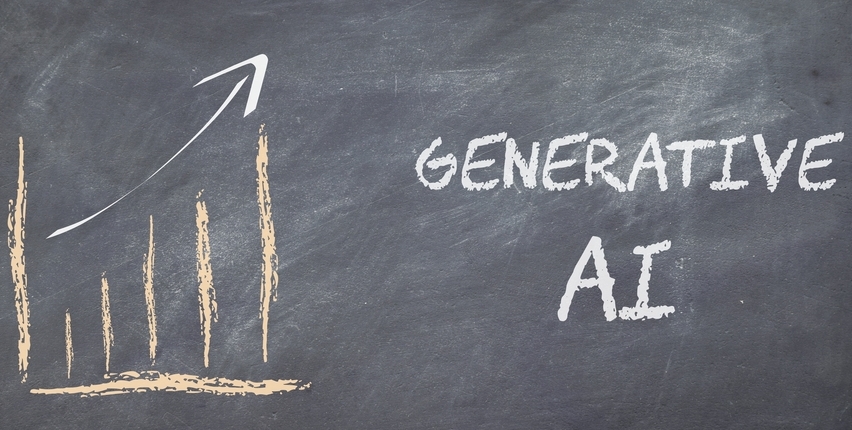The global industrial automation market, which was valued at $150B in 2021, is expected to almost double in the next few years, reaching $289B by 2028. As COVID-19 steamrolled our lives, companies and workers alike were forced to adapt to a new, disparate way of living and working. According to a McKinsey Global survey of executives conducted during the height of the pandemic, companies accelerated their digitization by three to four years, overhauling processes from customer and supply chain interactions to their internal operations.
As a result, companies are increasingly confronted with new data and information, as well as the mounting pressure to adopt new tools they don’t yet understand how to take advantage of in its entirety, leaving them with new technology not being used to its full potential. Fully embracing technology doesn’t equal full efficiency, and many companies are struggling to maximize their returns after investing heavily in data and AI.
Out with the old, in with the new
COVID indeed fast-forwarded the migration to cloud technologies and digitization, requiring increased investments in technology that would facilitate collaboration between displaced team members and customers while also protecting the company’s data. The hurried transition means businesses have new hardware and software and need the right tools to extract useful insights from these new data sets if they want to fully embrace the change – because it’s not going away now.
Since COVID only sped up the adoption of these processes but didn’t invent the need for them, organizations are facing the pressure to invest in AI and automation or risk losing ground in highly competitive markets racing to innovate the future. Optimizing workforce productivity while maintaining a high standard of service for customers is one of the biggest challenges companies must engage with to stay alive. In this case, businesses can use the data from workforce tools to increase innovation in automation. Automation is driven by an increased demand for efficient manufacturing processes, which means replacing legacy technology and, in turn, replacing old processes.
Addressing common challenges in using data and AI
Presented with all the possibilities new innovations in AI bring to the workplace, companies have access to more and more data they must learn how to extract, analyze and use. With AI, organizations can automate repetitive tasks, which leaves their workforce with time available for more important tasks, and process complex data sets much faster than our human minds are capable of handling. Using historical data, organizations can anticipate and meet customer needs before they occur, instead of relying on old, reactive processes that are slower and outdated.
However, this type of innovation requires organizational changes from the top down, breaking down silos to obtain the most accurate insights and coordinating processes across the business. It requires constant updates and fine-tuning to be fully optimized to a specific workplace.
Maximizing data and AI investments
In 2022, 92% of large companies reported achieving returns on their AI investments, up from only 30% in 2019. The same percentage plan on increasing their investments in data and AI over the next year. Companies are seeing the biggest earnings increase on AI when they take advantage of its capabilities to a greater extent, like using cloud technologies to connect and share data. Eighty percent of companies are already using some form of automation technology or plan to do so in the next year. Using a combination of data and AI, field service organizations are a good example of how automation can streamline workflows, as it enables them to implement predictive maintenance services so they can predict customer needs and prepare for potential issues before they arise.
While AI has a place in every industry, it’s important to remember that AI systems are not a one-size-fits-all solution to each organization’s specific problems. That’s both the beauty and the challenge of it – the way AI and data work hand in hand to personalize its every aspect, and the difficulties in ensuring that time and money invested into it don’t go wasted. As the future becomes more automated, organizations need a clear and holistic understanding of their data silos to fully leverage its potential. When this data is used effectively, it allows organizations to solve problems end-to-end and creates a clear path towards success.
About the Author

As Chief Technology Officer of IFS in North America, Rick Veague is responsible for driving the leading product and industry solutions that deliver true business value to IFS customers and partners in the United States and Canada. As a well-respected panelist and speaker, Rick regularly speaks on IFS solutions and IT strategies at tradeshows and industry events throughout the country. Rick joined IFS in 1999, and has held various pre- and post-sales positions developing, marketing and delivering high-value business applications including ERP, SM, EAM and MRO solutions. He holds a degree in Computer Science and Mathematics from Knox College.
Sign up for the free insideAI News newsletter.
Join us on Twitter: https://twitter.com/InsideBigData1
Join us on LinkedIn: https://www.linkedin.com/company/insidebigdata/
Join us on Facebook: https://www.facebook.com/insideAI NewsNOW





I couldn’t agree more when you said that “COVID only sped up the adoption of these processes”. I see AI in the future being used heavily to move data between platforms and validate that data that is being moved.